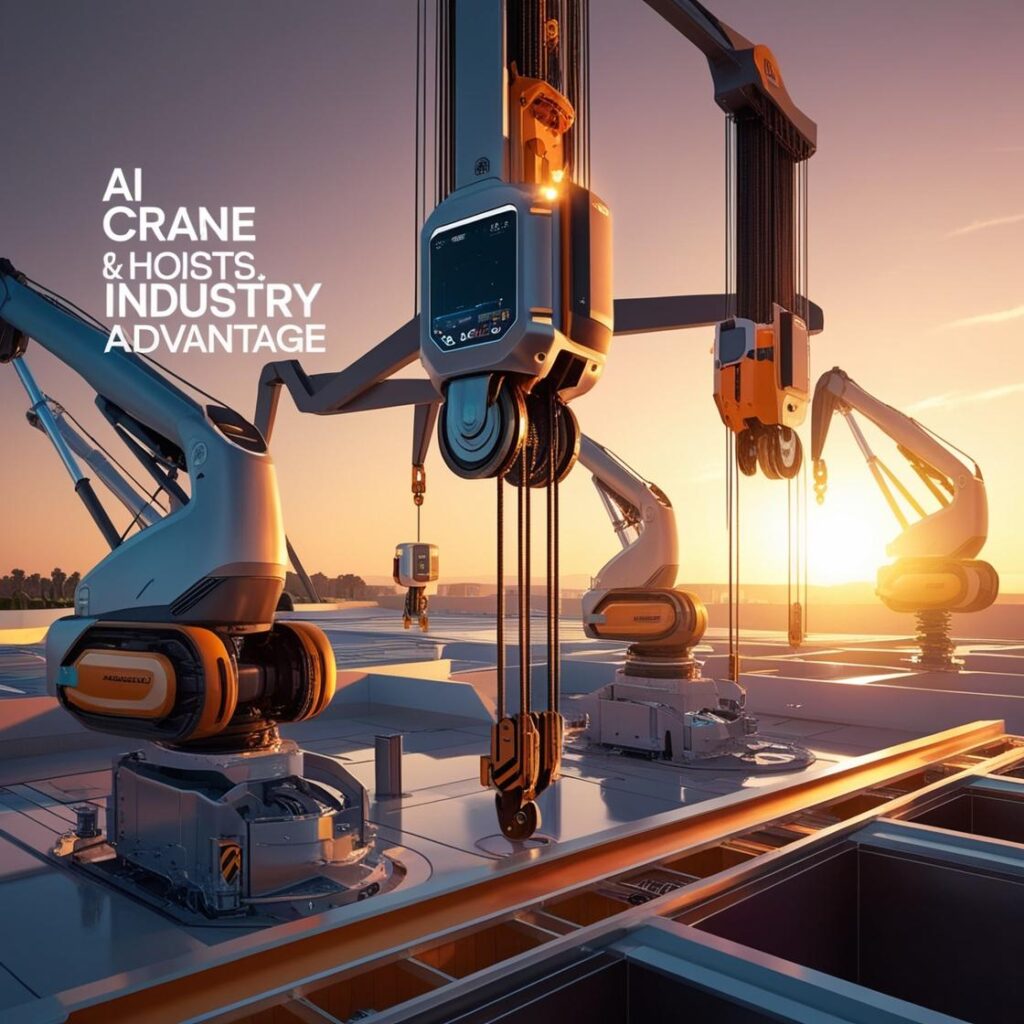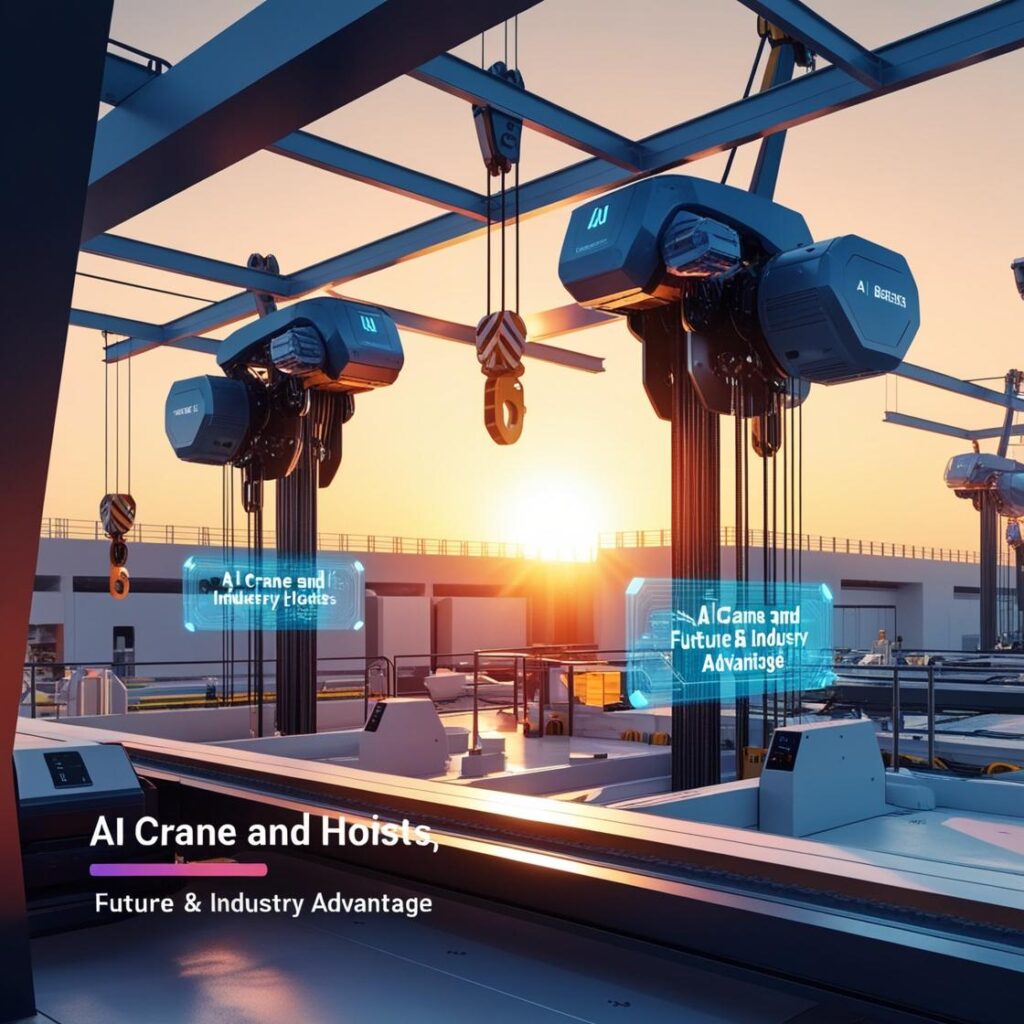Crane and hoist systems, critical to industries such as construction, logistics, and manufacturing, are experiencing a revolutionary transformation with the integration of artificial intelligence (AI). These advancements enhance operational efficiency, safety, and precision, paving the way for smarter and more sustainable industrial ecosystems.
This section describes the crane and hoist ecosystem and the deployment of cranes ad hoists solutions in different industries, along with the impact of associated technologies on the crane and hoist market.

The Role of AI in Cranes and Hoists
AI enhances cranes and hoists by enabling real-time decision-making and automation. With embedded AI, these systems can analyze vast amounts of data to:
- Optimize Load Handling: AI algorithms calculate the optimal lifting path, minimizing energy consumption and reducing wear and tear.
- Predict Maintenance Needs: Machine learning models analyze operational data to predict equipment failures before they occur, increasing uptime and reducing repair costs.
- Enhance Safety: AI-powered sensors and cameras detect obstacles, monitor load stability, and alert operators to potential hazards.
- Enable Autonomous Operations: Advanced AI allows cranes to perform automated tasks, such as material sorting or repetitive lifting operations, with minimal human intervention.
Future Prospects of AI in Cranes and Hoists
The future of AI-driven cranes and hoists is shaped by technological convergence, including IoT, robotics, and advanced sensors. Key developments include:
- Smart Crane Ecosystems: Integration with IoT enables cranes to communicate with other machinery, creating synchronized workflows in factories and construction sites.
- Remote Monitoring and Control: AI facilitates remote operation, making crane systems accessible and operable from centralized control rooms or even mobile devices.
- AI-Powered Training Simulations: Virtual reality (VR) training modules, combined with AI, prepare operators for complex scenarios, improving efficiency and safety.
- Energy Optimization: AI systems are being developed to manage energy consumption in cranes, contributing to sustainability goals.

Industry Advantages
AI-enhanced cranes and hoists offer substantial benefits across industries:
- Construction: Improved precision in heavy lifting reduces project delays and enhances site safety.
- Logistics: Faster and more accurate material handling streamlines supply chains.
- Manufacturing: Integration with robotic systems improves productivity and ensures consistent quality.
- Maritime: Automated hoists expedite cargo handling at ports, reducing turnaround times for ships.
Regional and Market Impact
In North America, the adoption of AI in crane and hoist systems is accelerating due to strong industrial demand and a focus on smart manufacturing. Government initiatives promoting automation and sustainability further fuel this growth. Key sectors, such as automotive, oil and gas, and infrastructure, are early adopters benefiting from reduced operational costs and enhanced scalability.
AI integration in cranes and hoists is redefining industrial processes, emphasizing safety, precision, and efficiency. As these technologies advance, the industry is poised for an era of smart automation, offering a competitive edge and driving progress across multiple sectors.